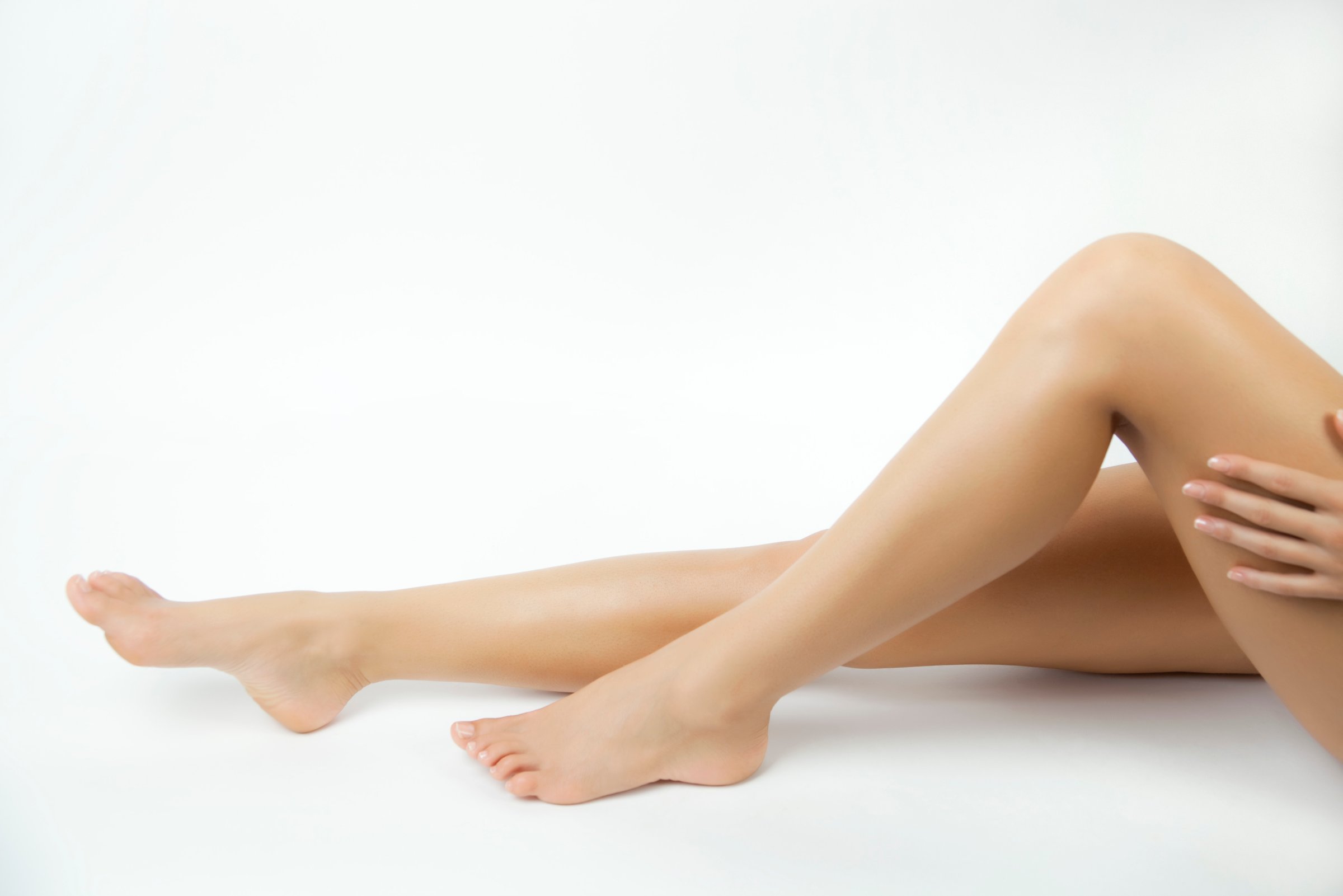
Real talk: There’s nothing abnormal about stretch marks. In fact, studies estimate that 90 percent of pregnant women, 70 percent of adolescent girls, and 40 percent of adolescent men develop the streaks of broken elastin that are characterized by puckered grooves in the skin.
Although marks are common, it can be hard for a lot of us to embrace them if they’re particularly prominent or discolored—especially during warm weather when showing more skin is in. And while there’s a whole slew of topical creams and oils that promise to get rid of stripes, in reality they can only improve their appearance. “A stretch mark is like an acne scar. Since it’s a type of scar, the depth to where the damage of the skin is, is far below where any topical can reach,” explains N.Y.C.-based cosmetic dermatologist Dr. Paul Jarrod Frank. “So, sadly there’s nothing that can really be done topically despite what these products claim.”
RELATED: Polar Vortex Winds Are No Match for these Hydrating Eye Creams
Before getting too worked up over the fact that the products you’ve been slathering on aren’t really doing anything, there are in-office methods of treatment that vastly minimize marks and can even make them disappear for good. If you’re going to turn to a dermatologist to help you with your stretch marks, Dr. Frank stresses the importance of making an appointment early to get the best results. “Your expectations should be high if you catch them early. If you have stretch marks that are 20-years-old, they should be lower,” he says. “With every year that goes by, you can expect your results to be less. If you catch your stretch marks in the red stage, you have a 90 percent chance of controlling them.”
For newer marks, which are those that are red, raised and inflamed, Dr. Frank recommends vascular laser treatment. “This laser destroys the blood vessels causing the inflammation to the blood cells,” he explains. Aside from some bruising on the area that’s treated, there’s no downtime afterwards and you can expect to see improvement in 3-5 sessions.
RELATED: 6 New Face Mists That Do More Than Just Refresh
On older marks, which are characterized by potted, silver stripes, Dr. Frank says that Fraxel laser resurfacing can aid in vastly diminishing them. Expect to experience a few days of redness following the skin-renewing treatment, and to see stretch marks reduced from 40 to 70 percent in 3-5 sessions.
While lasers work best on fairer skin tones, Dr. Frank says that microneedling is an option for deeper complexions. “Deeper skin tones aren’t as prone to stretch marks because they generally have more elasticity,” he explains. “But, microneedling can be a solution if you do have marks. Like lasers, you’re using physical trauma to through the tissue to stimulate new collagen and tissue regeneration. It’s about getting the body to fix itself.” And just like lasers, this method can be done in monthly intervals, with a bit of redness following.
This article originally appeared on InStyle.com
More Must-Reads from TIME
- Why Trump’s Message Worked on Latino Men
- What Trump’s Win Could Mean for Housing
- The 100 Must-Read Books of 2024
- Sleep Doctors Share the 1 Tip That’s Changed Their Lives
- Column: Let’s Bring Back Romance
- What It’s Like to Have Long COVID As a Kid
- FX’s Say Nothing Is the Must-Watch Political Thriller of 2024
- Merle Bombardieri Is Helping People Make the Baby Decision
Contact us at letters@time.com